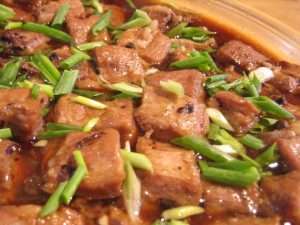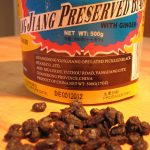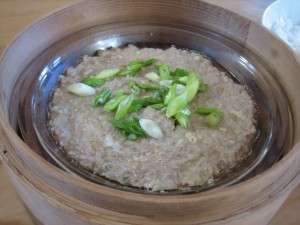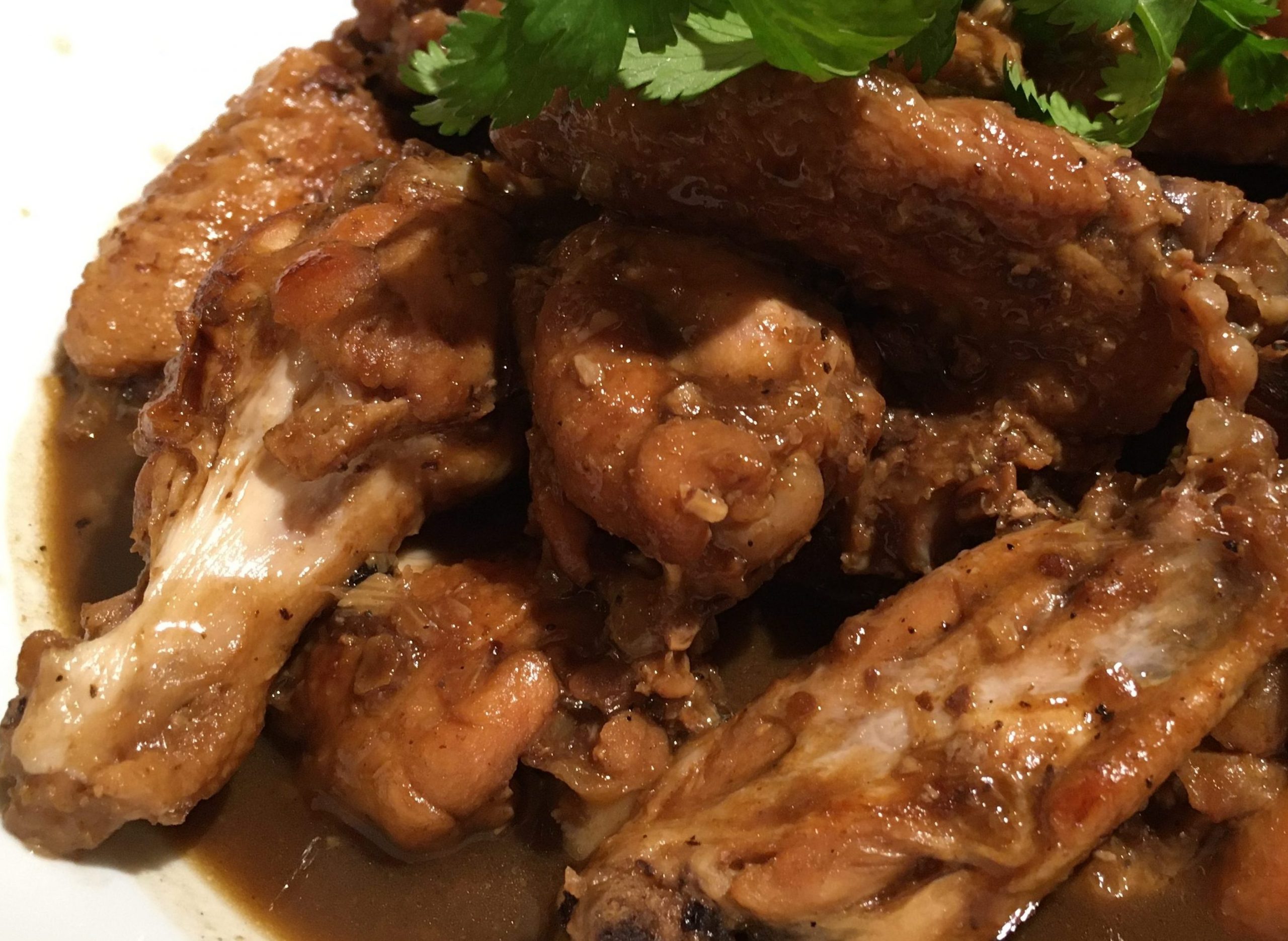
With chicken wings in the freezer, I turned to a recipe in The Hakka Cookbook, Braised Chicken Wings in Bean Sauce. I love this recipe because it takes little effort but yields a big payoff. My Hakka friend, Fah Liong, taught me how to make these Hakka chicken wings. Dark salty fermented bean sauce permeates the soft, silky chicken flesh and resulting sauce with intense savoriness. A generous measure of freshly ground pepper adds a spicy kick.
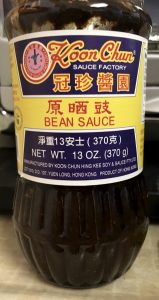
Look for bean sauce in Asian markets. If you can’t find the Chinese bean sauce (aka known as bean sauce or ground bean sauce) use the more available hoisin sauce but omit the sugar. Bean sauce is the base for the sweeter, more seasoned hoisin.
To cook, simply brown about 2 pounds meaty chicken wing sections in oil, then add 2 tablespoons minced garlic. Add 2 cups water, 2 tablespoons ground bean sauce, 1 tablespoon each soy sauce and sugar, and about 1/2 teaspoon freshly ground black pepper. Cover and simmer until wings are tender when pierced, 35 to 45 minutes. With a slotted spoon, transfer the wings to a serving dish. Skim fat off pan juices, and if sauce tastes watery, boil, uncovered, to concentrate flavor and reduce to about 1 cup. Pour over wings. For more details, see page 203 in The Hakka Cookbook. Serve with rice and stir-fried greens. Enjoy!

